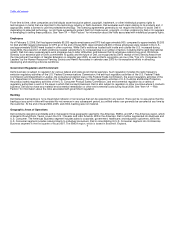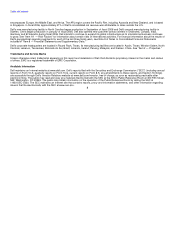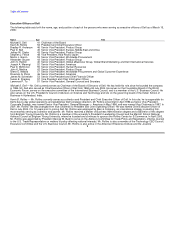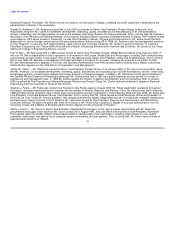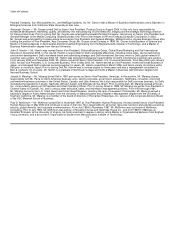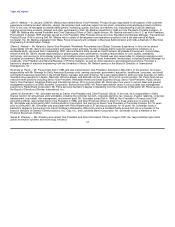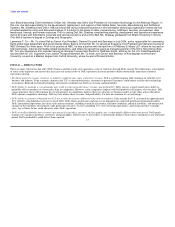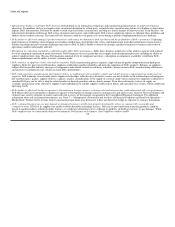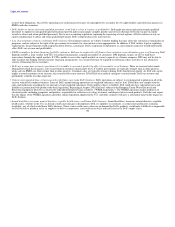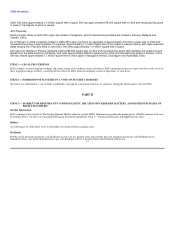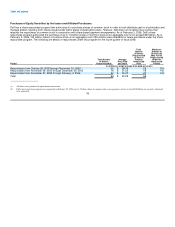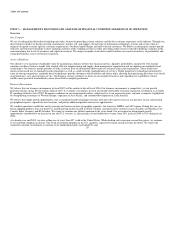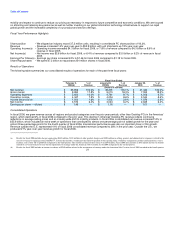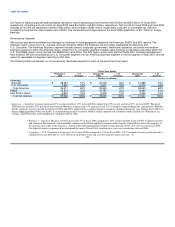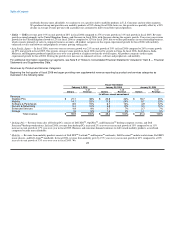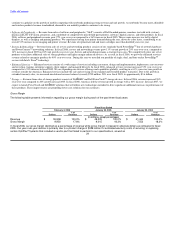Dell 2005 Annual Report Download - page 17
Download and view the complete annual report
Please find page 17 of the 2005 Dell annual report below. You can navigate through the pages in the report by either clicking on the pages listed below, or by using the keyword search tool below to find specific information within the annual report.
Table of Contents
• Infrastructure failures could harm Dell's business. Dell depends on its information technology and manufacturing infrastructure to achieve its business
objectives. If a problem, such as a computer virus, intentional disruption by a third-party, natural disaster, manufacturing failure, or telephone system failure
impairs Dell's infrastructure, Dell may be unable to book or process orders, manufacture, and ship in a timely manner or otherwise carry on its business. An
infrastructure disruption could cause Dell to lose customers and revenue, and could require Dell to incur significant expense to eliminate these problems and
address related security concerns. The harm to Dell's business could be even greater if it occurs during a period of disproportionately heavy demand.
• Dell's failure to effectively manage a product transition could reduce the demand for Dell's products and the profitability of Dell's operations. Continuing
improvements in technology mean frequent new product introductions, short product life cycles, and improvement in product performance characteristics.
Product transitions present execution challenges and risks for Dell. If Dell is unable to effectively manage a product transition, its business and results of
operations could be unfavorably affected.
• Disruptions in component availability could unfavorably affect Dell's performance. Dell's direct business model gives it the ability to operate with reduced
levels of component and finished goods inventories. Dell's financial success is partly due to its supply chain management practices, including its ability to
achieve rapid inventory turns. Because Dell maintains minimal levels of component inventory, a disruption in component availability could harm Dell's
financial performance and its ability to satisfy customer needs.
• Dell's reliance on suppliers creates risks and uncertainties. Dell's manufacturing process requires a high volume of quality components from third-party
suppliers. Defective parts received from these suppliers could reduce product reliability and harm the reputation of Dell's products. Reliance on suppliers
subjects Dell to possible industry shortages of components and reduced control over delivery schedules (which can harm Dell's manufacturing efficiencies),
and increases in component costs (which can harm Dell's profitability).
• Dell could experience manufacturing interruptions, delays, or inefficiencies if it is unable to timely and reliably procure components from single-sourced
suppliers. Dell maintains several single-source supplier relationships, either because alternative sources are not available or the relationship is advantageous
due to performance, quality, support, delivery, capacity, or price considerations. If the supply of a critical single-source material or component is delayed or
curtailed, Dell may not be able to ship the related product in desired quantities and in a timely manner. Even where alternative sources of supply are
available, qualification of the alternative suppliers and establishment of reliable supplies could result in delays and a possible loss of sales, which could harm
operating results.
• Dell's failure to effectively hedge its exposure to fluctuations in foreign currency exchange rates and interest rates could unfavorably affect its performance.
Dell utilizes derivative instruments to hedge its exposure to fluctuations in foreign currency exchange rates and interest rates. Some of these instruments and
contracts may involve elements of market and credit risk in excess of the amounts recognized in the Consolidated Financial Statements. For additional
information about risk on financial instruments, see "Item 7 — Management's Discussion and Analysis of Financial Condition and Results of Operation —
Market Risk." Further, Dell's revenue from its international operations may decrease if it does not effectively hedge its exposure to currency fluctuations.
• Dell's continued business success may depend on obtaining licenses to intellectual property developed by others on commercially reasonable and
competitive terms. If Dell or its suppliers are unable to obtain desirable technology licenses, Dell may be prevented from marketing products, could be
forced to market products without desirable features, or could incur substantial costs to redesign its products, defend legal actions, or pay damages. While
Dell's suppliers may be contractually obligated to indemnify Dell against such expenses, those suppliers could be unable
14





